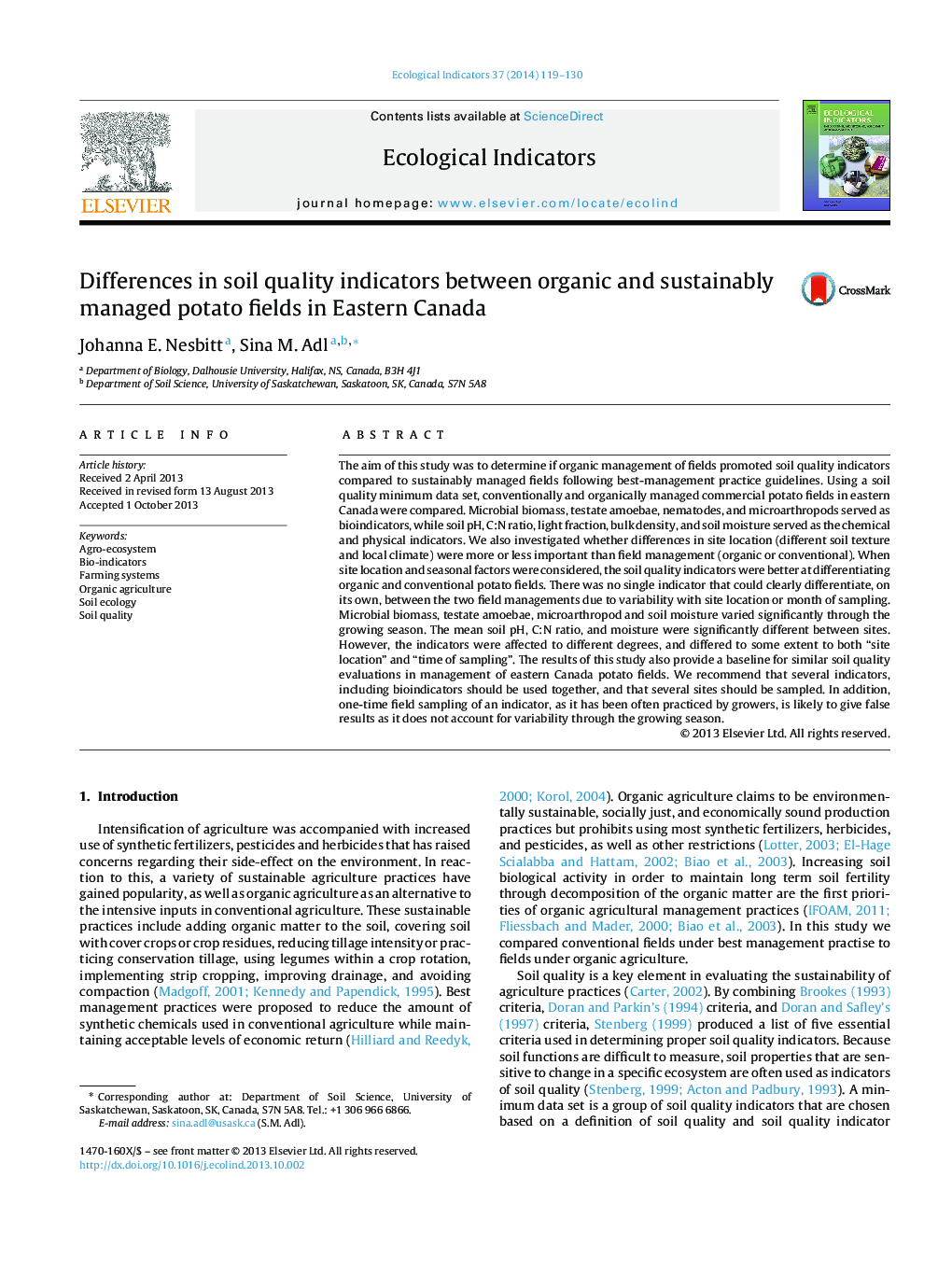| Article ID | Journal | Published Year | Pages | File Type |
|---|---|---|---|---|
| 4373257 | Ecological Indicators | 2014 | 12 Pages |
•Indicators were chosen to compare physical, chemical and biological measures.•Organic management did not differ significantly from best-management practice conventional fields.•Recommendations are made regarding use of and sampling of indicators for management purposes.•The increased tillage in the organically managed fields may be preventing enhanced bioindicator values.•Measurements must be made several times through the growing season and not just once.
The aim of this study was to determine if organic management of fields promoted soil quality indicators compared to sustainably managed fields following best-management practice guidelines. Using a soil quality minimum data set, conventionally and organically managed commercial potato fields in eastern Canada were compared. Microbial biomass, testate amoebae, nematodes, and microarthropods served as bioindicators, while soil pH, C:N ratio, light fraction, bulk density, and soil moisture served as the chemical and physical indicators. We also investigated whether differences in site location (different soil texture and local climate) were more or less important than field management (organic or conventional). When site location and seasonal factors were considered, the soil quality indicators were better at differentiating organic and conventional potato fields. There was no single indicator that could clearly differentiate, on its own, between the two field managements due to variability with site location or month of sampling. Microbial biomass, testate amoebae, microarthropod and soil moisture varied significantly through the growing season. The mean soil pH, C:N ratio, and moisture were significantly different between sites. However, the indicators were affected to different degrees, and differed to some extent to both “site location” and “time of sampling”. The results of this study also provide a baseline for similar soil quality evaluations in management of eastern Canada potato fields. We recommend that several indicators, including bioindicators should be used together, and that several sites should be sampled. In addition, one-time field sampling of an indicator, as it has been often practiced by growers, is likely to give false results as it does not account for variability through the growing season.
